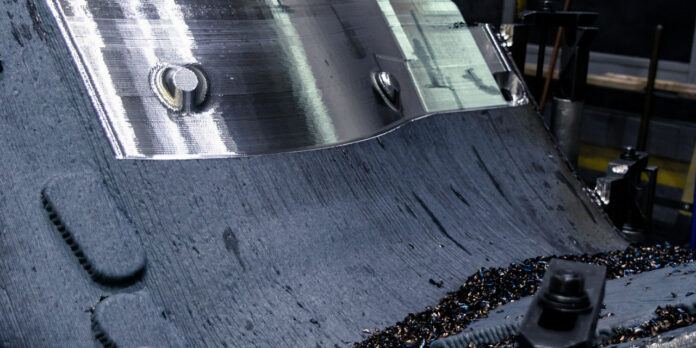
A collaboration between Baker Industries, a Lincoln Electric Company, Lincoln Electric Additive Solutions (LEAS) and General Atomics Aeronautical Systems, Inc. (GA-ASI) will lead to a feasibility study of Wire-Arc Additive Manufacturing for the production of steel layup tooling. The latter serve the manufacturing of composite lamination for GA-ASI’s unmanned aerial systems (UAS).
If you are a regular reader of 3D ADEPT, you must be familiar with Lincoln Electric Additive Solutions that recently took part in a dossier entitled “Unveiling the disguised complexities of Wire-Arc Additive Manufacturing”. The company is also known for its collaboration with organizations operating in demanding industries such as Chevron.
GA-ASI is a manufacturer of Remotely Piloted Aircraft (RPA) systems, radars, and electro-optic and related mission systems whereas Baker is a supplier of tooling, prototyping, CNC machining, fabrication, additive manufacturing, and more.
As part of this project, GA-ASI sought a solution for complex tooling that was repeatable, accurate, vacuum-tight, and rigid enough to withstand the stress and fatigue caused by repetitive autoclave cycles. After a collaborative review of several tool geometries and requirements, the companies’ engineering teams determined that WAAM could be the right solution.
“Our turnaround time can be significantly quicker than larger job shops, and we can usually ramp up production quickly to combat fluctuations in customer demand,” says Mike Wangelin, Business Development Manager at Lincoln Electric Additive Solutions and Baker Industries. Coupled with Baker’s robust post-processing, fabrication, and inspection capabilities, WAAM’s ability to quickly produce large, complex components using several materials could present a comprehensive solution to GA-ASI’s production tooling needs.
While still in the process of qualification at GA-ASI, the process has demonstrated preliminary success toward reaching production-level use in GA-ASI’s manufacturing operations. Overall, GA-ASI has seen savings ranging between 30-40% in cost and about 20-30% in lead time using WAAM in place of traditional manufacturing processes for specific tool families and geometries. In addition, the first tool produced has passed GA-ASI’s initial assessments. It is vacuum-tight, has a uniform thermal survey, and exceeds target GD&T requirements.
Remember, you can post jobopportunities in the AM Industry on 3D ADEPT Media free of charge or look for a job via our job board. Make sure to follow us on our social networks and subscribe to our weekly newsletter : Facebook, Twitter, LinkedIn & Instagram ! If you want to be featured in the next issue of our digital magazine or if you hear a story that needs to be heard, make sure to send it to contact@3dadept.com





